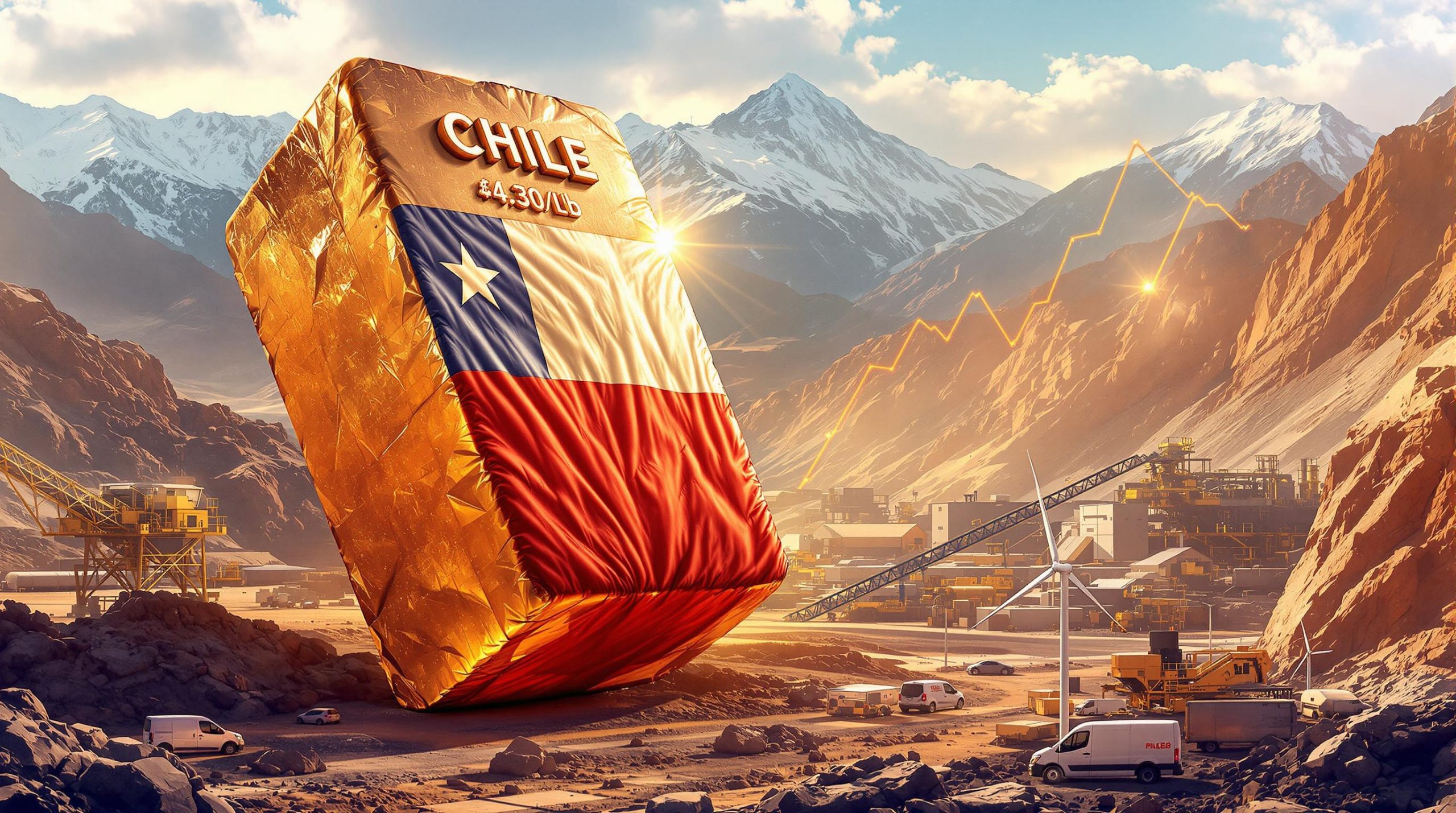What Did Ramaphosa Offer to the US Regarding Rare Earth Minerals?
The Diplomatic Exchange Over Rare Earth Resources
South Africa's President Cyril Ramaphosa made headlines in May 2025 when he offered rare earth mineral supplies to US President Donald Trump during their White House meeting. This diplomatic gesture centered around the Rainbow Rare Earths project in Phalaborwa, Limpopo province – a development that surprised many given South Africa's limited known rare earth reserves.
Key Details of the Presidential Offer
- The offer was made during a high-profile White House meeting in May 2025
- The Washington Post had previously highlighted the strategic importance of the project
- Rainbow Rare Earths CEO George Bennett confirmed it was their project being referenced, stating plainly, "That was our project"
- The offer came amid ongoing US–China trade tensions over critical minerals
Bennett later explained the circumstances behind Ramaphosa's offer: "Someone told the president about the article," referring to The Washington Post coverage that had brought the Phalaborwa project to presidential attention.
Why Was the US Already Invested in This South African Project?
The Pre-existing US Investment Structure
In an interesting twist, the United States had already secured involvement in the Rainbow Rare Earths project before Ramaphosa's offer. The US International Development Finance Corporation (DFC) had committed $50 million in equity financing for a stake in TechMet, an 11.7% shareholder in Rainbow Rare Earths.
This investment structure represented a strategic move by the US government to secure access to critical minerals outside Chinese supply chains. TechMet, led by Brian Menell whose family helped build South Africa's influential Anglovaal mining group, serves as the vehicle for US financial involvement in the project.
The arrangement meant Ramaphosa's offer to supply rare earths to the US was somewhat redundant – Washington had already secured a financial position in this strategic South African asset months earlier through Trump's critical minerals order.
What Makes the Phalaborwa Rare Earths Project Strategically Important?
Strategic Value Metrics of the Project
The Phalaborwa project represents one of the few potential near-term suppliers of critical rare earth elements to Western markets. Despite South Africa not being traditionally known for rare earth resources, this brownfield project has significant strategic value.
According to a 2024 interim economic assessment, the project is projected to produce approximately 1,900 tonnes of magnet rare earth oxides annually. With an estimated development cost of $317 million, the economics of the project look increasingly attractive, especially given recent pricing developments.
Berenberg bank analyst Richard Hatch has highlighted the project's potential: "Rainbow's Phalaborwa project is a tier 1 project that can benefit from the DOD's step-change for the rare earths space." The project could potentially achieve EBITDA margins of around 70%, making it highly profitable if developed successfully.
The brownfield status of Phalaborwa gives it significant advantages over greenfield developments, including reduced capital requirements and faster time-to-market. Perhaps most critically, the project can produce high-purity neodymium and praseodymium (NdPr) oxide – essential components for permanent magnets in high-tech applications.
How Does China's Dominance in Rare Earths Impact Global Markets?
China's Market Control Statistics
The context for Ramaphosa's offer and US interest in South African rare earths stems from China's overwhelming dominance in the sector. This market concentration has created significant supply chain vulnerabilities for Western economies.
According to the US Geological Survey, China controls approximately 70% of global rare earth mining. More concerning for Western nations is Beijing's control over 91% of all refined rare earth output, with about 90% of this refined production occurring in-country.
This dominance extends to finished products – The Washington Post reported that China produced 300,000 tons of rare earth magnets in 2024 alone. When previous trade tensions have arisen, China has demonstrated willingness to reduce exports of these critical minerals.
The applications for these materials are extensive and strategically vital, including:
- Wind turbines for renewable energy generation
- Advanced humanoid robots for manufacturing and services
- Military equipment including fighter jets
- Electric vehicle motors and drivetrains
- Various high-tech consumer electronics
This combination of Chinese supply dominance and critical applications has created urgent incentives for Western nations to develop alternative supply chains through critical minerals energy transition initiatives.
What Game-Changing Deal Did the US Department of Defense Recently Sign?
Impact of the DOD-MP Materials Agreement
On July 10, 2025, the US Department of Defense (DOD) signed a landmark supply agreement with MP Materials, establishing a public-private partnership aimed at creating a domestic rare earth supply chain. This agreement includes a 10-year supply commitment for NdPr at a floor price of $110/kg, significantly above the current spot price of $60-$63/kg.
The deal represents a major financial commitment from the US government, with $400 million in funding to support the development of domestic rare earth processing and magnet manufacturing. The strategic goal is ambitious – enabling production of up to 6,000 tonnes per year of rare earth magnets within the United States.
Industry reactions have been overwhelmingly positive. George Bennett, CEO of Rainbow Rare Earths, described the pricing mechanism as "manna from heaven" for project economics. Berenberg's Richard Hatch offered an even more direct assessment: "This deal is game-changing for rare earths and will act to reduce the dominance of China over the rare earth supply chain."
By establishing a price floor significantly above current market rates, the DOD has effectively created a new benchmark for rare earth transactions throughout Western supply chains – a development with profound implications for projects like Phalaborwa.
How Does This Price Floor Benefit the South African Project?
Economic Benefits for Phalaborwa
The DOD agreement with MP Materials has significant positive implications for Rainbow Rare Earths' Phalaborwa project. The established price floor transforms the economics of rare earth projects outside China.
With a potential floor price of $110/kg compared to current spot prices around $60-$63/kg, the project's profitability projections have improved dramatically. Analysts suggest this could support EBITDA margins of approximately 70%, making the project highly attractive to investors and lenders.
Bennett has observed that potential offtakers are now much more receptive to pricing discussions, noting, "They weren't flinching" when discussing the new benchmark prices. This dramatically improves the company's negotiating position for future supply agreements.
The project is advancing technically as well. "We are starting to engage with debt providers and we are actively starting to negotiate contracts. The DOD agreement sets a very good benchmark across the Western supply chain for rare earth supply," Bennett explained. The company is developing optimized flow sheets with a comprehensive feasibility study to follow.
This combination of improved pricing economics and technical advancement positions the Phalaborwa project as potentially one of the most significant non-Chinese rare earth developments in the coming years, furthering South Africa mineral beneficiation efforts.
How Does This Project Compare to Global Rare Earth Production?
Production Context and Comparisons
While significant for South Africa and Western supply chains, the Phalaborwa project represents a relatively small portion of global rare earth production. However, its strategic importance outweighs its size.
According to the US Geological Survey, global rare earth oxide production reached approximately 350,000 tonnes in 2023, with China accounting for nearly 70% of this total. Phalaborwa's projected 1,900 tonnes of magnet rare earth oxides would represent less than 1% of global production by volume.
However, in the context of non-Chinese supplies, particularly of high-value magnet rare earths like neodymium and praseodymium, the project takes on outsized importance. The concentrated nature of these critical elements makes even relatively small production volumes strategically significant.
For comparison:
- China produced approximately 300,000 tons of rare earth magnets in 2024
- The US aims to build capacity for 6,000 tonnes of rare earth magnets annually
- Phalaborwa's 1,900 tonnes of magnet rare earth oxides could support a significant portion of Western magnet manufacturing
This context explains why a relatively modest project in South Africa has attracted presidential-level attention and US government investment. It's not the size of the project but its strategic positioning in developing non-Chinese supply chains that makes it valuable in the evolving mining industry evolution.
FAQ: South Africa's Rare Earth Development and US Relations
What is the current status of the Phalaborwa rare earths project?
The project is advancing through technical development phases, with optimized flow sheets on process plans forthcoming and a feasibility study in progress. Rainbow Rare Earths is actively engaging with potential debt providers and negotiating offtake contracts based on the newly established Western price benchmarks.
How has the rare earths market reacted to the US government intervention?
Market analysts have mixed reactions – some describe the DOD deal as "game-changing" for rare earths markets, while others express concern about state intervention more typical of Beijing than Washington. The established price floor has generally been viewed positively by Western rare earth developers who now have greater certainty for project economics.
What advantages does the Phalaborwa project have over other potential rare earth sources?
As a brownfield project, Phalaborwa offers lower development costs and faster time-to-market than greenfield operations. The project can produce high-purity NdPr oxide with exceptional margins, especially under the new Western pricing benchmarks. Its location in South Africa, a country with established mining infrastructure and expertise, provides additional advantages.
How might South Africa benefit from developing rare earth production capabilities?
Beyond direct economic benefits, developing rare earth capabilities positions South Africa as a strategic supplier in critical mineral supply chains. This creates opportunities for technology transfer, downstream processing development, and strengthened international partnerships, particularly with the United States and other Western nations seeking to reduce dependence on Chinese supplies.
Further Exploration:
Readers interested in learning more about South Africa's role in global rare earth markets can also explore related educational content from Miningmx, which offers additional perspectives on mining developments in Africa.
Want to Catch the Next Major Discovery on the ASX?
Discovery Alert's proprietary Discovery IQ model instantly notifies investors of significant mineral discoveries as they happen, providing the market edge needed to capitalise on opportunities like rare earth projects. Explore how historic discoveries have generated substantial returns by visiting Discovery Alert's dedicated discoveries page.




